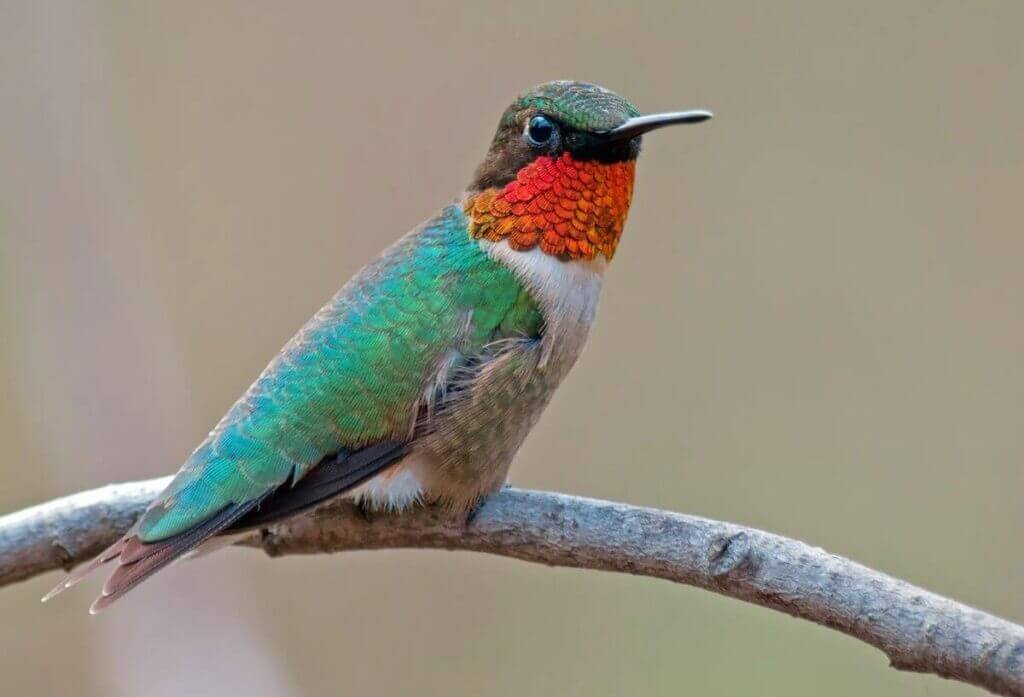The sight of tiny, hovering hummingbirds darting around flowers and feeders is a magical sign of warmer weather. Hummingbirds flitting about gardens provide hours of entertainment and beauty for many Kentucky residents. But as the summer wanes and fall approaches, these energetic birds will soon depart on their yearly migration south.
So when exactly do Kentucky’s beloved hummingbirds leave? This guide will cover the migration patterns of hummingbirds in the state, signs they are getting ready to leave, and how to attract them to enjoy their presence as long as you can.
What Are Hummingbirds?
Hummingbirds are a family of tiny, glittery-plumaged birds named for the audible humming noise created by their rapidly flapping wings which allows them to hover in place. Their minuscule size also enables them to access flower nectar unlike any other bird.
There are over 300 species found only in the Americas. The most common species found in Kentucky each summer is the ruby-throated hummingbird. Adults measure just 3-4 inches long and weigh only a few grams.
Hummingbirds are migratory, traveling vast distances each year between wintering and breeding grounds. Their migration is prompted by seasonal shifts in flower availability, daylight, and food sources.

Why Do Hummingbirds Migrate?
Hummingbirds migrate twice yearly to track the blooming of flower species they rely on for nutrition.
In spring, hummingbirds leave tropical winter homes and fly north to take advantage of warmer weather and longer daylight hours for breeding opportunities. In fall, they return south as flower availability declines and days shorten in northern latitudes.
This long-distance migration is fueled by high-calorie nectar and helps ensure hummingbirds find optimal habitat and sufficient food year-round. Their incredible flying capabilities enable this annual round trip migration over thousands of miles.
When Do Hummingbirds Typically Leave Kentucky?
In Kentucky, most hummingbirds leave to migrate south sometime between late-September and late-October. Peak fall migration occurs within this window as food sources dwindle and temperatures drop in the state.
However, a small number of stragglers may linger into early November if flowers and feeders remain available or suitable weather temporarily persists. But by late November, virtually all hummingbirds will have departed Kentucky for warmer southern climates.
They’ll remain there until returning northward to breed starting in April and May each year. Tracking flower bloom schedules helps predict migration patterns.
Factors That Affect Hummingbird Migration
While most hummingbirds leave Kentucky in October, the specific timing is influenced by:
Daylight Hours
Shortening daylight triggers hormonal changes that spur the urge to migrate. As autumn days rapidly shorten, hummingbirds sense conditions are no longer ideal and begin their southerly journeys.
Floral Abundance
Hummingbirds start migration when blooms of favorite nectar flowers like monarda, fuchsia, and trumpet vine decline with cooler temperatures. They follow the bloom sequence south.
Insect Activity
Small insects that provide essential proteins for breeding hummingbirds become scarce as temperatures drop, signaling it’s time to move to warmer areas.
Weather Conditions
Prolonged warm temperatures with adequate blossoms may delay migration, while an early cold snap or frost can accelerate departure. But declining overall resources necessitate migration.
So while the main migration window is September-October, changes in daylight, food, and weather influence their progress.
How to Attract Hummingbirds to Your Yard
You can draw in gorgeous hummingbirds to enjoy before they migrate with a yard that caters to their needs:
Plant Nectar-Producing Flowers
Fill borders, beds, and containers with tubular red, orange, and pink flowers that provide the nectar fuel hummingbirds rely on. Favorites include bee balm, cardinal flower, nasturtium, and coral honeysuckle.
Set Up Hummingbird Feeders
Use nectar feeders to supplement natural flowers. Mix 1 part white sugar with 4 parts water, boiled, and fill feeders. Place in open areas and change nectar every 2-3 days to avoid spoilage.
Create a Hummingbird-Friendly Habitat
Incorporate diverse flowering plants, meadow spaces, running water, protected perching spots, and minimal pesticide use to meet all hummingbird habitat needs.
Attracting these flying jewels to your garden not only brings joy, but provides essential fuel reserves they need for their long migration ahead.
When to Take Down Your Hummingbird Feeders
To discourage stragglers from sticking around when they should migrate, take down feeders at these optimal times:
Two Weeks After You See the Last Hummingbird
Once hummingbird sightings cease, leave feeders up for 2 more weeks in case late-exiting individuals are still present and reliant on feeders before removing them.
In Mid-December
If you haven’t seen a hummingbird but still have feeders up in mid-December, go ahead and take them down as any remaining birds are likely gone by this point.
Taking down feeders when migration is over prevents hummingbirds from mistakenly sticking around when they should be migrating and sends a clear signal it’s time to continue the journey.
Summary
To recap the migration schedule of Kentucky’s favorite tiny tourists:
- Most hummingbirds leave Kentucky between late-September and late-October.
- Exact timing is influenced by daylight, flowers, food, and weather patterns.
- Attract them by providing a nectar-rich landscape.
- Remove feeders in mid to late fall to encourage migration.
So while saying farewell to hummingbirds is bittersweet, we can look forward to these sparkling aerialists returning next spring to again brighten our gardens. In the meantime, creating an inviting backyard habitat lets us enjoy their presence as long as possible before winter migration.





